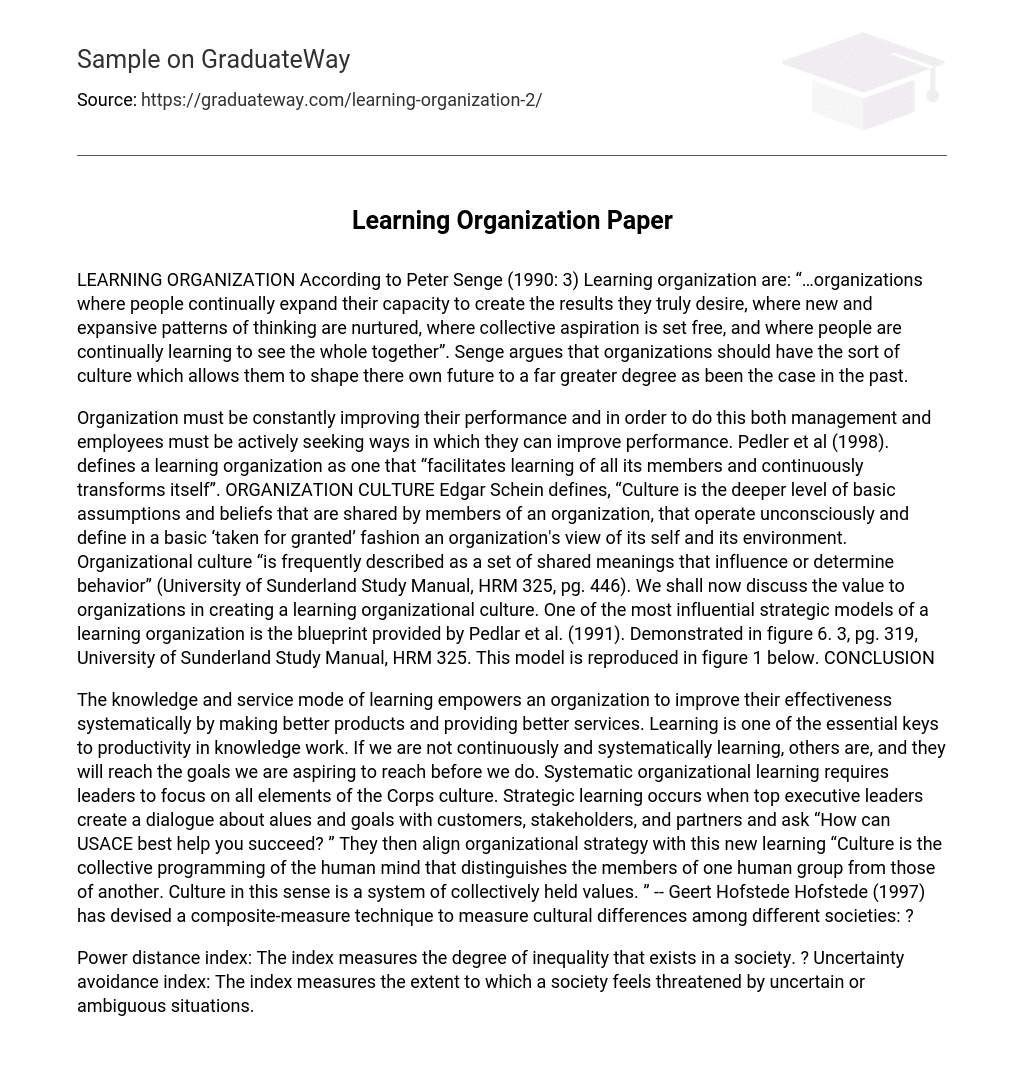Introduction
According to Peter Senge (1990: 3), learning organizations are defined as organizations in which people consistently enhance their ability to achieve the outcomes they genuinely desire. These organizations foster the development of innovative and comprehensive thinking patterns, liberate collective aspirations, and promote shared holistic understanding. Senge asserts that organizations should cultivate a culture that empowers them to have a significantly greater influence on shaping their own future compared to the past.
According to Pedler et al (1998), an organization needs to constantly improve their performance. This requires both management and employees actively seeking ways to enhance performance. A learning organization, as defined by Pedler et al (1998), is one that facilitates learning for all members and continually transforms itself.
ORGANIZATION CULTURE
Edgar Schein defines culture as the shared basic assumptions and beliefs that operate unconsciously in an organization and shape its view of itself and its environment. According to the University of Sunderland Study Manual, HRM 325, organizational culture is often described as a set of shared meanings that impact behavior. In this discussion, we will explore the value of creating a learning organizational culture for organizations. One of the most influential models for a learning organization is provided by Pedlar et al. (1991) as shown in figure 6.3, page 319 of the University of Sunderland Study Manual, HRM 325. This model is presented in figure 1 below.
CONCLUSION
The organization can enhance their effectiveness through the knowledge and service mode of learning, which involves improving products and services. Learning is crucial for productivity in knowledge work. If we do not consistently learn, others will surpass us in achieving our goals. Leaders must prioritize all aspects of the Corps culture for systematic organizational learning.
Strategic learning takes place when top executive leaders engage in a conversation with customers, stakeholders, and partners to discuss values and goals. They inquire about the best ways for USACE to assist them in achieving success. Consequently, they align the organizational strategy with this newfound knowledge. Additionally, culture is described as the collective mindset that sets apart one human group from another. In this context, culture represents a system of shared values.





